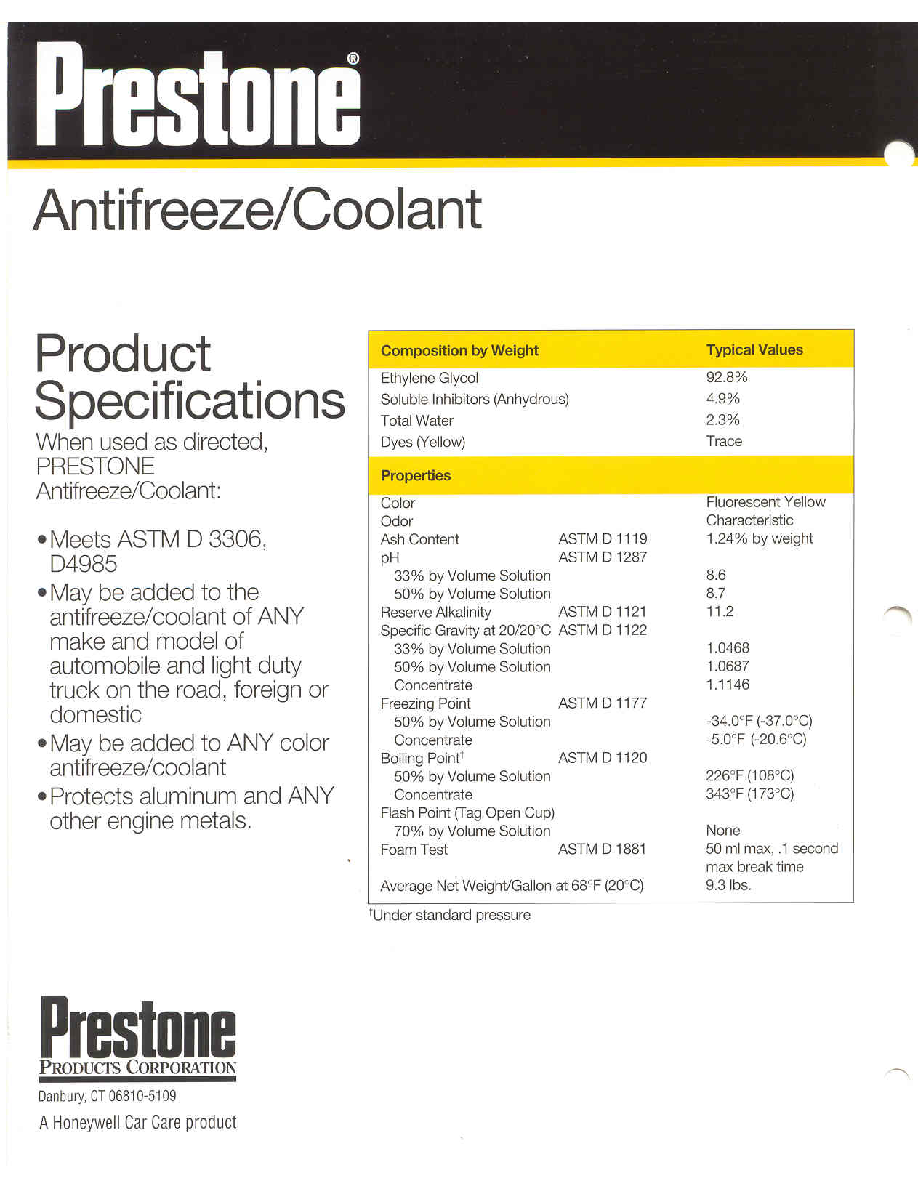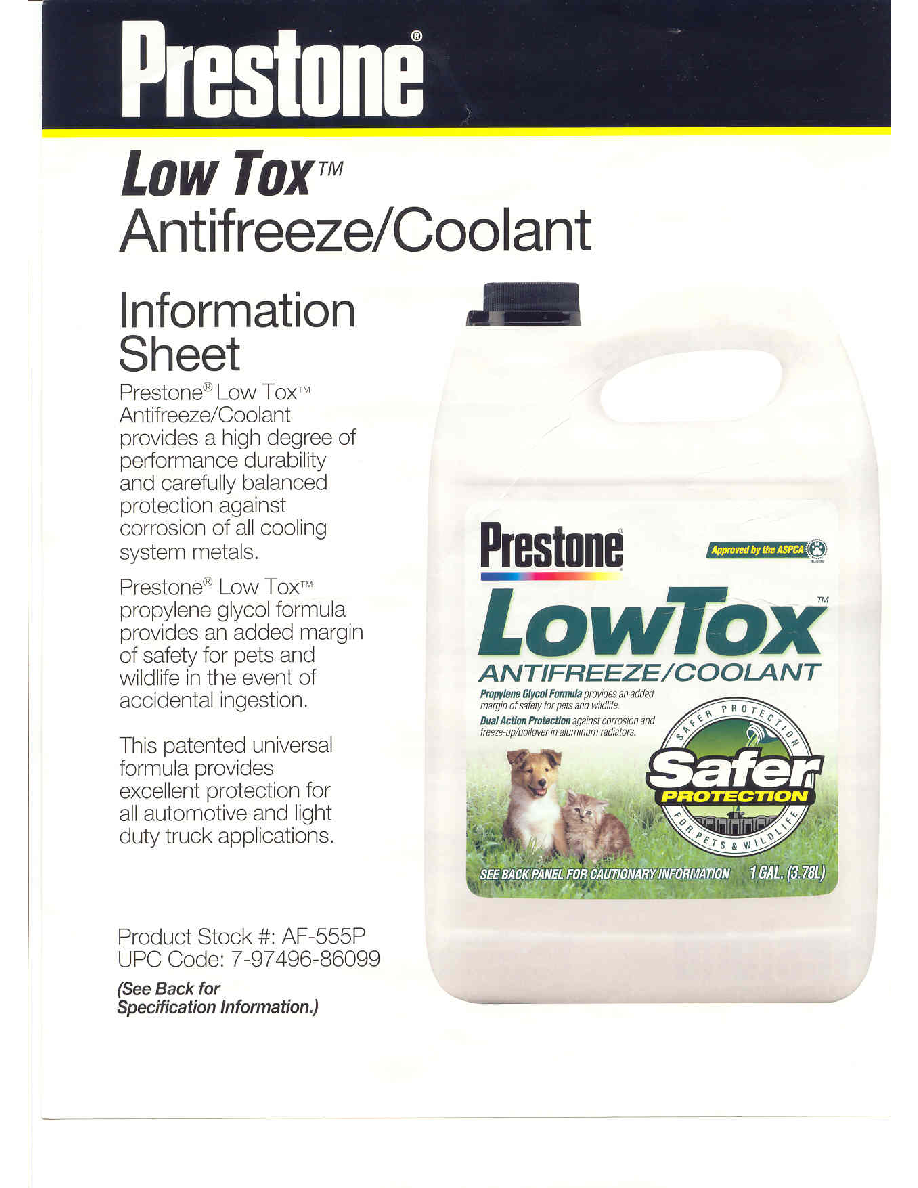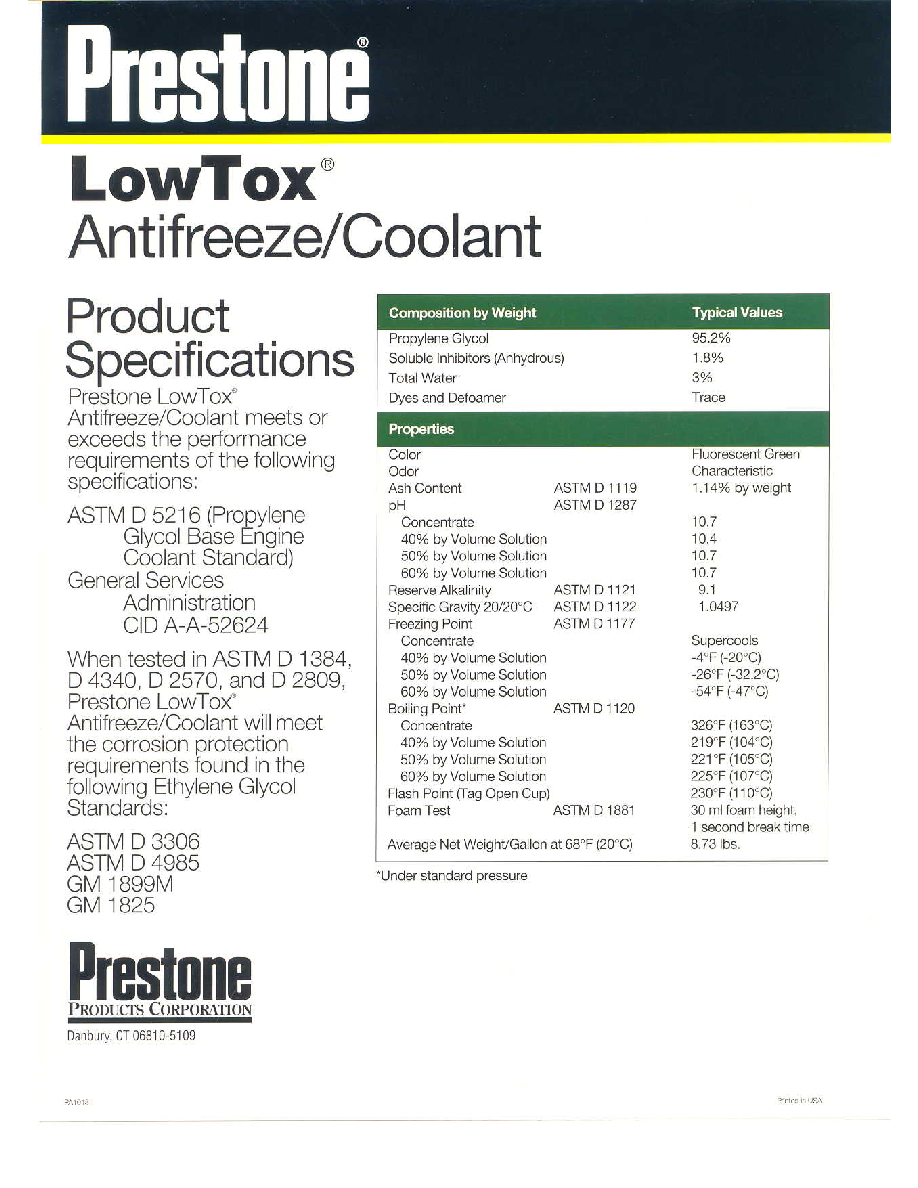
U.S. Product Assistance - Call 1.800.890.2075
Option 4 Prestone Technical Support
e-mail:
Prestone antifreeze products we discussed can be found at:
Prestone Extended Life Antifreeze/Coolant
Prestone Low Tox Antifreeze/Coolant
Prestone Extended Life is based on ethylene glycol and uses an Organic Acid Technology (OAT)
inhibitor package to provide five year service and corrosion protection. This antifreeze may cause
"solder bloom" at some point during its persistence in the cooling system. This is a white
appearance on the surface of the solder, but is suggested not to be a problem. Although the
technical support specialist was not certain of its composition, the "solder bloom" may be the
result of surface oxidation of the solder. Prestone Extended Life has the same toxic
considerations as other ethylene glycol products. A 50:50 mixture of this product and water
provides freeze protection to -34F and boiling protection to 226F.
Prestone Low Tox Antifreeze/Coolant is based on propylene glycol and uses a low silicated
inhibitor package. Traditional antifreezes, which are increasingly difficult to find on store shelves,
used silicated inhibitors. These additives form a protective layer on metal surfaces that can be
observed. Unlike the Extended Life products, the silicated corrosion inhibitors have a service life
of only approximately two years. Propylene glycol has much lower toxicity than does ethylene
glycol. A 50:50 mixture of Prestone Low Tox and water provides freeze protection to -26F and
boiling protection to 221F. A 60:40 mixture of Prestone Low Tox and water provides freeze
protection to -54F and boiling protection to 225F.
If one changes antifreeze from ethylene glycol chemistry to propylene glycol, it is important that
the cooling system be thoroughly flushed with water. To emphasize the need to water flush a
cooling system when changing antifreeze chemistries, the Technical Support Specialist said:
1) It defeats the very purpose of using a propylene glycol (less toxic product)
2) Mixing the two would not give accurate readings when tested for freeze protection and
boil over protection.
Of the two antifreeze systems discussed in this note, the technical support specialist described
the Extended Life product as having better corrosion protection characteristics and chemistry that
is compatible with the widest range of cooling systems.
My take on all this?
- Prestone Low Tox has corrosion inhibitors that are most close to the ones found in traditional
antifreezes. It is also a lower toxicity product. The primary disadvantage is the need to replace the
coolant every two years.
- Prestone Extended Life offers much longer service life (five years). Prestone Technical Support
explicitly stated that the corrosion inhibitors would not present a problem in systems containing
lead/tin solder.


